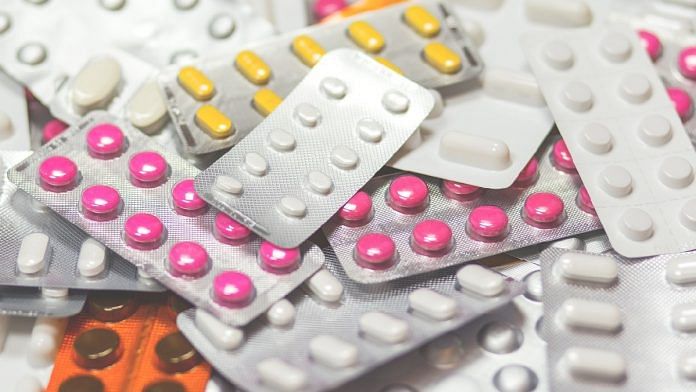A factsheet, issued by the White House after the signing of the executive order, said that most major drugmakers charge at least three times more for a drug in the US as compared to other developed countries, such as the UK. “Drug manufacturers discount their products to gain access to foreign markets and then subsidise those discounts through high prices charged in America,” it alleged.
Pharmaceutical and industry experts ThePrint spoke with explained that the latest drug pricing reform is primarily directed at forcing drugmakers to align their US prices with those in the European market and will apply to patented drugs.
“Since Indian drugmakers supply only generics or complex generics, which in any case are very cheap and low priced due to competition pressure, the Indian drug industry appears shielded as of now,” a senior official in the department of pharmaceuticals under the Ministry of Chemicals and Fertilisers told ThePrint.
The industry, which had been on the edge since March this year, amid threats that the US could impose a reciprocal tariff on pharmaceutical products from the country, can heave a sigh of relief, the official said.
In the first week of April, pharmaceuticals escaped the heavy reciprocal tariffs announced by the Trump administration, but the US president has repeatedly said that it could come at a later date and has also urged pharma companies to manufacture drugs within the US.
India supplies drugs and vaccines worth $9 billion to the US annually, and according to industry estimates, 70-80 percent of the total pharmaceutical supplies from India to the US are low-value, high-volume generics—cheaper copies of brand-name drugs created after patents expire.
Complex generics, which comprise just about 20-30 percent of India’s pharma export to the US, on the other hand, are comparatively more difficult to manufacture, made by the likes of Sun Pharma, Cipla and Lupin—among others—and are costlier than simple generics.
According to pharma analyst Shrikant Akolkar, even though India is the supplier of nearly 40 percent of all prescription drugs in the US, it operates on razor-thin margins, which ensures that Indian drug exporters do not feel the heat of the latest order.
Akolkar is the vice president at Nuvama Institutional Equities, a leading domestic institutional brokerage house.
Those in the pharmaceutical business, too, said they were not worried.
“Though details on the implementation mechanism of the order will bring more clarity on this (order), we do not see a reason yet why there would be an impact on our business in the US,” Sudarshan Jain, secretary general of the Indian Pharmaceutical Alliance (IPA)—a network of 23 top Indian drugmakers—told ThePrint.
Pharmaceutical analyst Salil Kallianpur, too, said that as of now, the order seems to consider branded and patented medicines which are sold in the US at prices far higher compared to other countries—mainly other developed ones.
ThePrint reached out to the Organisation of Pharmaceutical Producers of India (OPPI)—a lobby group of foreign-headquartered drugmakers—for comment over email. The report will be updated if and when a reply is received.
In most European countries, patented drugs are purchased by governments following price negotiations, unlike the US, where healthcare is largely insurance-driven and covers prescription medicines.
Also, most insurances in the US have a co-payment system, which means that patients also need to pay 10-30 percent of a drug’s price, while the insurer pays the rest.
In the case of European countries, the procurement prices of drugs purchased by the government are not revealed either by the governments or the companies, said K.M. Gopakumar, a legal adviser and senior researcher with Third World Network.
“But the general understanding is that companies supply these drugs at far lower prices in these nations as compared to the US,” said Gopakumar.
Also, he said, most patented drugs in India are sold at globally competitive prices, though in some cases they can be way more affordable than in the US.
Fat-busting drug Mounjaro, launched in India in March this year by US- based pharma giant Eli Lilly and Company, for example costs Rs 3,500 and Rs 4,375 for 2.5 mg and 5 mg vials, respectively, which means those on the medication would need to pay Rs 14,000- Rs 17,500 for the injection in the country.
In comparison, without insurance, the drug costs $1,000-1,200 (Rs 85,000-102,000) in the US.
“But unlike this one, patented drugs are also very costly in India and are largely unaffordable for the majority—as such, Big pharma is unlikely to pass on the innovation cost to low and middle-income countries such as India,” Gopakumar argued.
(Edited by Sanya Mathur)








